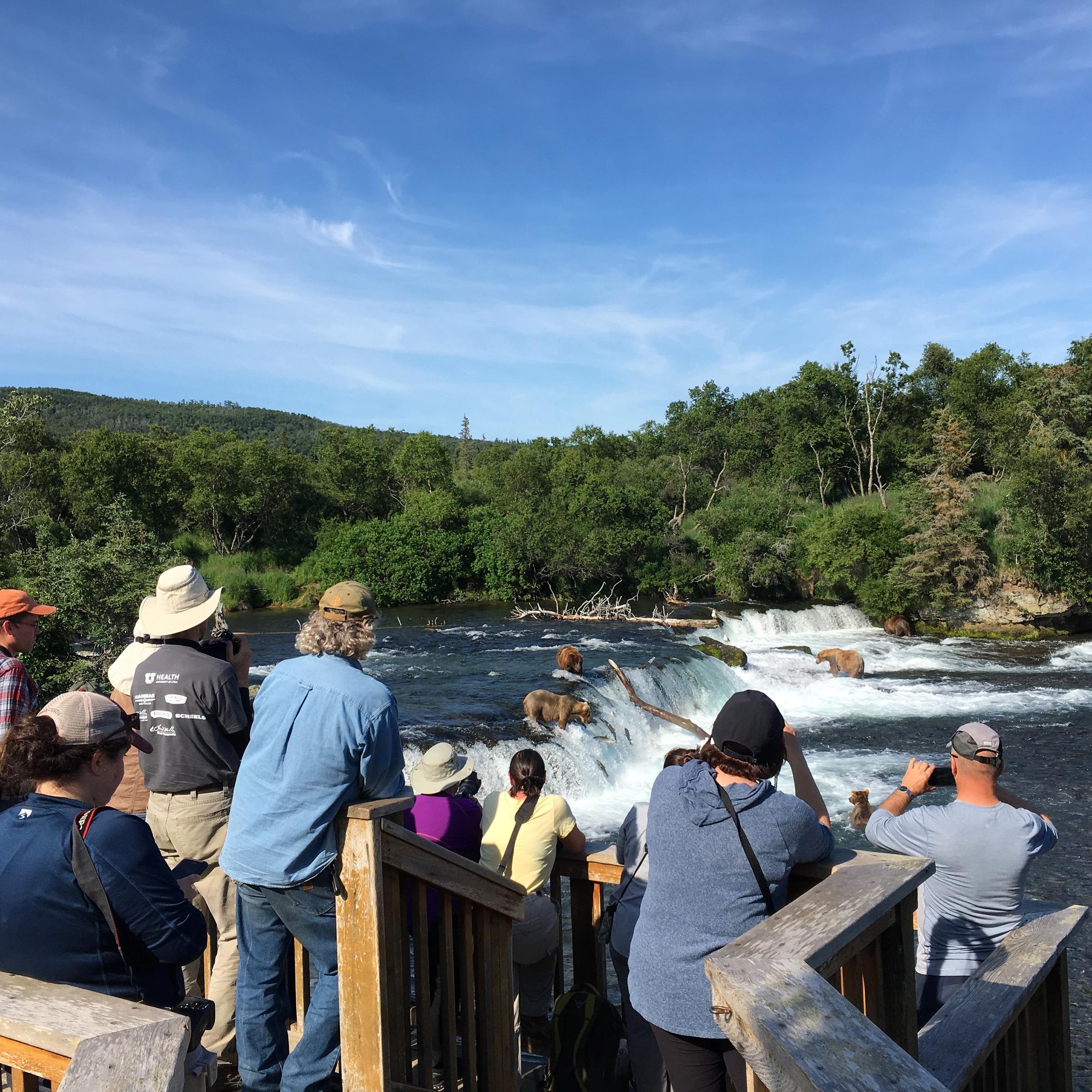
Bristol Bay has seen a lot of salmon return to the region during the summer sockeye runs in the past few years. This hasn’t just been good for commercial fishermen — it’s also been good for bears.
Along the Alaska Peninsula, around the Brooks River near its famous waterfalls in Katmai National Park, more bears are appearing and more cubs are surviving. This made one researcher ask whether there is a direct link between the size of Bristol Bay’s salmon runs and the number of bears returning to the river each summer.
Tourists from all over come to Brooks Falls in Katmai National Park to watch some of the best fishermen in the world face down the hordes of sockeye surging upstream. The bears are quite a sight, and there are so many here because it’s the easiest place around for them to get a quick bite.
Leslie Skora compares the Brooks River to being the biggest store in a town
“Brooks River is not the only grocery store around, but it’s the most well supplied,” Skora said.
Skora is a wildlife biologist for the National Park Service at Brooks Camp studying bears. She says the salmon are so easy to catch at the falls because it’s a bottleneck; thousands of fish get backed up as they try to jump up about four feet to continue to their spawning grounds. This makes it easier for bears to catch all the salmon they need, and for people to study them.
Since 2001, researchers have kept track of how many individual brown bears come to the stream annually to fish. Around 40 bears return on a yearly basis, but recently there’s been a spike in those numbers.
“We have been experiencing a boom of young bear sub-adults or newly emancipated independent bears,” Skora said.
Usually these young bears would scatter far and wide once they separate from their mothers, but Skora says around 10 sub-adults showed up this summer. Young bears are more likely to make contact with people, and these sub-adults are causing some trouble around the park.
For the first time in over two decades, bears have made contact with humans near the falls. In both incidents, young bears approached individuals and pawed at them. No one was hurt and they were considered minor encounters, but it does raise a question: why are these new bears here?
“The past several years have been a higher productivity for females with cubs. So we have just seen more cubs in previous years and greater survival of the cubs that have been around,” Skora said. “So now it is just that pulse of that age generation coming up.”
The number of bears that show up every summer does fluctuate. In 2013, when Skora first started working near Brooks Falls, it was one of the lowest turnouts ever recorded. She remembers tourists coming up and asking ‘where are all the bears?’
This got Skora thinking. She started examining what determines how many bears come to the river every summer. She does this by tallying how many bears appear annually and “then look(s) at the number of salmon that have been jumping just at Brooks Falls.”
Skora said she then “compares if those numbers have created a correlation in the number of cubs we’ve seen or the survival of cubs or adult bears.”
If there is more salmon, Skora thinks that could mean more bears, while fewer fish would mean fewer bears. Bristol Bay’s large salmon returns over the last few years and the spike in young bears around the Brooks River could support this hypothesis, but nothing is certain yet.
Skora has been working on the project for over a year. Besides the amount of salmon in the river, she is also interested in seeing if the river’s water level affects how many fish bears catch and if the amount of tourists visiting the falls impacts the bears at all. Her research requires hours of just watching bears. It can get a little tedious at times, especially when she’s sitting out in the rain all day. But it can also be like binge-watching T.V.
“Sometimes it is addicting, sometimes you just want to watch the soap opera drama unfold,” Skora said.
Back at the falls, Skora’s enthusiasm for watching bears is shared by a lot of people. Tia Roberts made her way from L.A. and can’t get over being so close to the predators while they snap jumping salmon out of the air.
“It never gets tiring. It is so thrilling to be able to watch anything in the wild in their own natural habitat watching their behavior,” Roberts said. “It is so… It is so thrilling.”
Skora hopes to wrap up her research on Brooks Falls within the next year and move on to a larger part of her study that will look at factors affecting brown bear behavior and survival across Katmai National Park.




